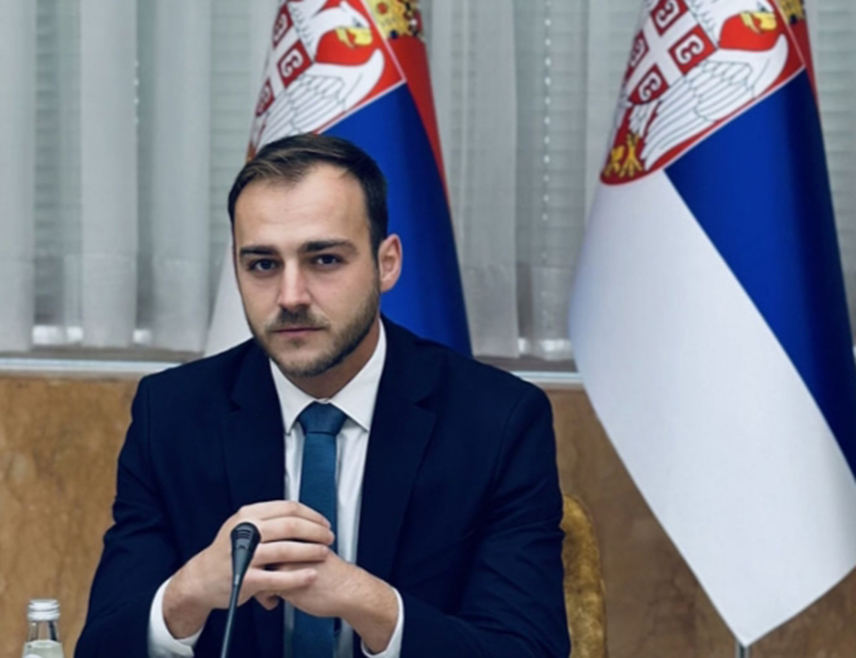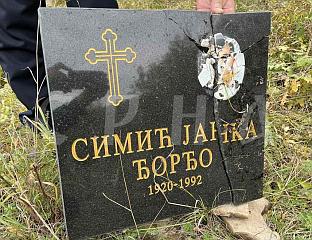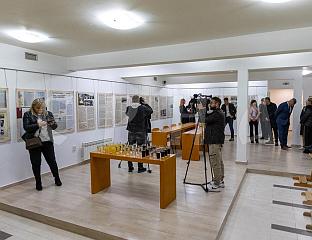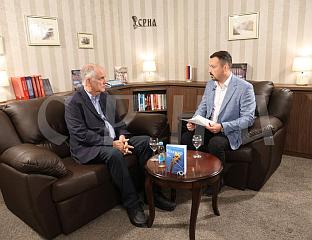English
19.10.2025

ARBUTINA: OCTOBER 1941 NAZI CRIMES ETCHED INTO SERBS’ COLLECTIVE MEMORY

BELGRADE, OCTOBER 19 /SRNA/ – The German occupiers committed horrific crimes against Serbs in the autumn of 1941 in Serbia, primarily targeting civilians, therefore these Nazi atrocities will remain etched in Serbian people’s collective memory as symbols of suffering in the fight against fascism, due to the large number of victims and the brutality with which they were murdered, Bojan Arbutina, Acting Director of the Museum of Genocide Victims in Belgrade, told SRNA.
Arbutina recalled that these crimes were committed in October 1941 in Draginac and other villages in the Jadar region, in Šabac, Kraljevo, and Kragujevac, where thousands of people, mostly civilians, including many children, were killed. These are the greatest sufferings of the people in Serbia during World War II. "These events have endured in the culture of remembrance and the collective memory as tragic events that marked the history of World War II, particularly the rebellious autumn of 1941, when the Serbian people refused to accept the occupation of their state," Arbutina told SRNA. CRIMINAL EQUATION "100 FOR 1" He recalled that the Serbs had launched an uprising at that time, which was followed by German occupiers’ merciless retaliation, who resorted to mass executions. "Kraljevo and Kragujevac are more dominent in the cultural memory of our people because of the horrific crimes committed there, when several thousand residents were executed according to the infamous calculation declared by /Nazi commander/ General Franz Böhme - 100 Serbs executed for every German soldier killed, and 50 for every one wounded," Arbutina said. He pointed to the fact that, according to this criminal calculation, residents of Kragujevac and Kraljevo were being executed, as well as people from the Jadar region near Loznica, particularly in Draginac, the epicenter of the crimes, where more people were killed than in Kragujevac and Kraljevo, and in a far more ruthless manner. Among the victims were hundreds of children, who were also killed in horrific ways. When asked whether these crimes had elements of genocide, Arbutina responded that they were war crimes against humanity and acts of revenge. "When Böhme orders 100 Serbs to be shot for each German soldier killed, and 50 for each one wounded, it clearly points to a crime of retaliation. In order to speak of genocide, there must be a genocidal intent, which was not present in this case, unlike in the Independent State of Croatia /NDH/, which had a clear genocidal intent and carried out a genocidal policy and genocide against Serbs in the NDH," said Arbutina. The crimes in Kragujevac, Kraljevo, and Draginac, Arbutina said, were indeed horrific and left deep trauma among the victims' descendants, but cannot be classified as genocide because there was no intent to destroy the entire population. The killings were linked to the uprising and fighting. "According to that cold, criminal arithmetic, they executed exactly the number of people deemed necessary to ‘make up’ for the German losses in clashes with Chetnik and Partisan units," explained Arbutina. JADAR REGION CRIMES LONG OVERLOOKED Arbutina noted that the crimes in Draginac and the Jadar region were overlooked for decades and did not receive the same attention as the massacres in Kragujevac and Kraljevo. He added that it would be beneficial to publish a scholarly paper or study that addresses this issue. "The fact is that these crimes were marginalized in socialist Yugoslavia, later during the 1990s, and even in the early 21st century. The Museum is trying to correct the narrative about the suffering of the people in western Serbia, including the Jadar and Mačva regions, as the people of Šabac also suffered greatly during the German offensive and the attempt to crush the uprising," said Arbutina. Between October 19 and 21, 1941, at least 2,796 people were executed in Kragujevac, including 25 women, 287 high school students and young men, and 40 children between the ages of 11 and 15. In Kraljevo, over five days between October 15 and 20, the Nazis executed at least 2,255 people, including children, women, and the elderly. The German occupiers began their killing spree in the Jadar region on October 14 in Draginac, and continued through October 20, spreading death to surrounding villages. They carried out mass shootings, massacres, and even burned people alive until around 3,000 Serbs were murdered. These Nazi retributions, in response to the uprising in the Loznica region, did not spare women or the elderly. Among the victims were over 300 children under the age of 10, including newborns just a few days old. Villages were devastated and turned into ruins, with some left entirely without a single surviving inhabitant. In memory of the suffering of people in the autumn of 1941, especially October 21, when civilians including students and teachers were executed en masse in Kragujevac, Serbia has declared this date a national holiday, observed as the Day of Remembrance for Serbian Victims in World War II.
English


TOMBSTONE VANDALIZED AT ORTHODOX CEMETERY IN VILLAGE OF GORNJI TIČIĆI
KAKANJ, OCTOBER 20 /SRNA/ – A tombstone at the Serbian Orthodox cemetery in the village of Gornji Tičići near Kakanj has been vandalized, parish pries...


DOCUMENTARY EXHIBITION "FROM NEVESINJE UPRISING TO SALONIKA FRONT" OPENED
PALE, OCTOBER 20 /SRNA/ – The documentary exhibition "From Nevesinje Uprising to Salonika Front", dedicated to Pero Tunguz, a national hero and symbol...


NETANYAHU: IF EUROPEAN LEADERS DO NOT ACT, MUSLIM RADICALIZATION OF EUROPE IS INEVITABLE
BANJA LUKA, OCTOBER 20 /SRNA/ – The Muslim radicalization of Europe is inevitable unless European leaders take decisive action against it, Israeli wri...


NETANYAHU: ISRAELIS ADMIRE SERB PEOPLE'S STRUGGLE AGAINST NAZISM
BANJA LUKA, OCTOBER 20 /SRNA/ – Israeli writer Ido Netanyahu says that the Serbs were almost the only people who actively fought under Nazi occupation...


GENERAL PAVKOVIĆ LEFT INDELIBLE MARK IN SERB PEOPLE AND ARMY’S HISTORY
BANJA LUKA, OCTOBER 20 /SRNA/ – President Milorad Dodik expressed condolences over the death of Colonel General Nebojša Pavković, who, as he emphasize...


SERB AND ISRAELI PEOPLES SHARE MUCH IN COMMON
BANJA LUKA, OCTOBER 20 /SRNA/ – Republika Srpska Prime Minister, Savo Minić, stated during a meeting with Israeli writer Ido Netanyahu that the Serb a...





 LATEST NEWS:
LATEST NEWS: